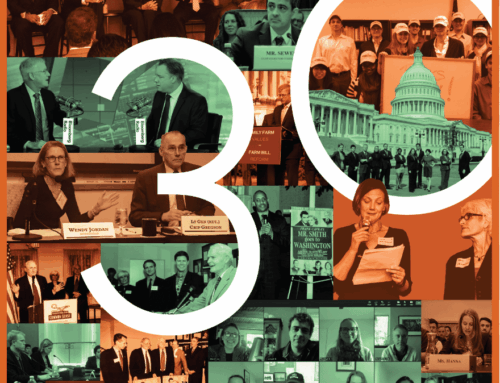Congress took important steps last year to address the long-term sustainability of the National Flood Insurance Program by passing the Biggert-Waters Flood Insurance Reform Act, which eliminates wasteful subsidies and moves flood insurance premiums to more closely match rates that are charged in the private market.
It is critical that Congress let these reforms proceed as enacted despite efforts by some lawmakers to delay them.
When the National Flood Insurance Program (NFIP) was established in 1968, Congress was warned that subsidies could “invite economic waste of great magnitude.” Well, we know which way that story unfolded. Although subsidies were largely envisioned to be limited and short-term, they weren’t: as of July 2013, an estimated 1,153,193 subsidized policies remain.
The availability of taxpayer-subsidized federal flood insurance over the last several decades made it financially attractive to develop in high-risk areas and helped fuel the coastal development boom that increased the program’s risk exposure and losses.
Even worse, the program’s benefits have flowed disproportionately toward repeatedly devastated properties and to the wealthy. Repetitive-loss properties represent only one percent of all policies, yet account for 25 to 30 percent of the cost of claims. And a Government Accountability Office study has found NFIP often is particularly generous to counties in the top deciles of median home value and income.
The Biggert-Waters Act finally made significant changes to the NFIP to help it become less fiscally reckless and to better inform policyholders of their flood risk.
As a consequence of the reforms, several types of properties that had previously received subsidies would have their rates increased until they met the full risk-based rate. While this may be financially painful in some cases, the new rates incentivize practices that reduce risk and in the long run will be good for the individual and for taxpayers.
Not surprisingly, this effort has been met with some backlash. In some cases, homeowners are facing steep increases in premiums after years — even decades — of paying the same subsidized rates. As a result, there have been a series of efforts in Congress to delay flood map modernization or delay rate increases.
It may be politically expedient and popular locally to delay reforms. But what may make good local politics generally makes bad insurance – and public – policy. People deserve to know the costs and risks of where they live, and taxpayers deserve to have those who choose to live in harm’s way pick up their share of the tab.
If Congress wants to deal with the issue of affordability, there are responsible ways to accomplish this goal. Any responsible approach to affordability should be temporary, targeted to those who need it, account for existing protection of homes, and independent of the NFIP rate structure. FEMA’s updated flood maps, which are crucial to the program’s success or failure, must be up-to-date, accurate and based on the best available science to be effective.
There is an increasing fatigue with the cost of the NFIP program among taxpayers. To delay or derail the reforms enacted a year ago would put this program on perilous footing – fiscally, politically, and existentially. The reforms must be enacted as planned.
Ellis is vice president of Taxpayers for Common Sense.










